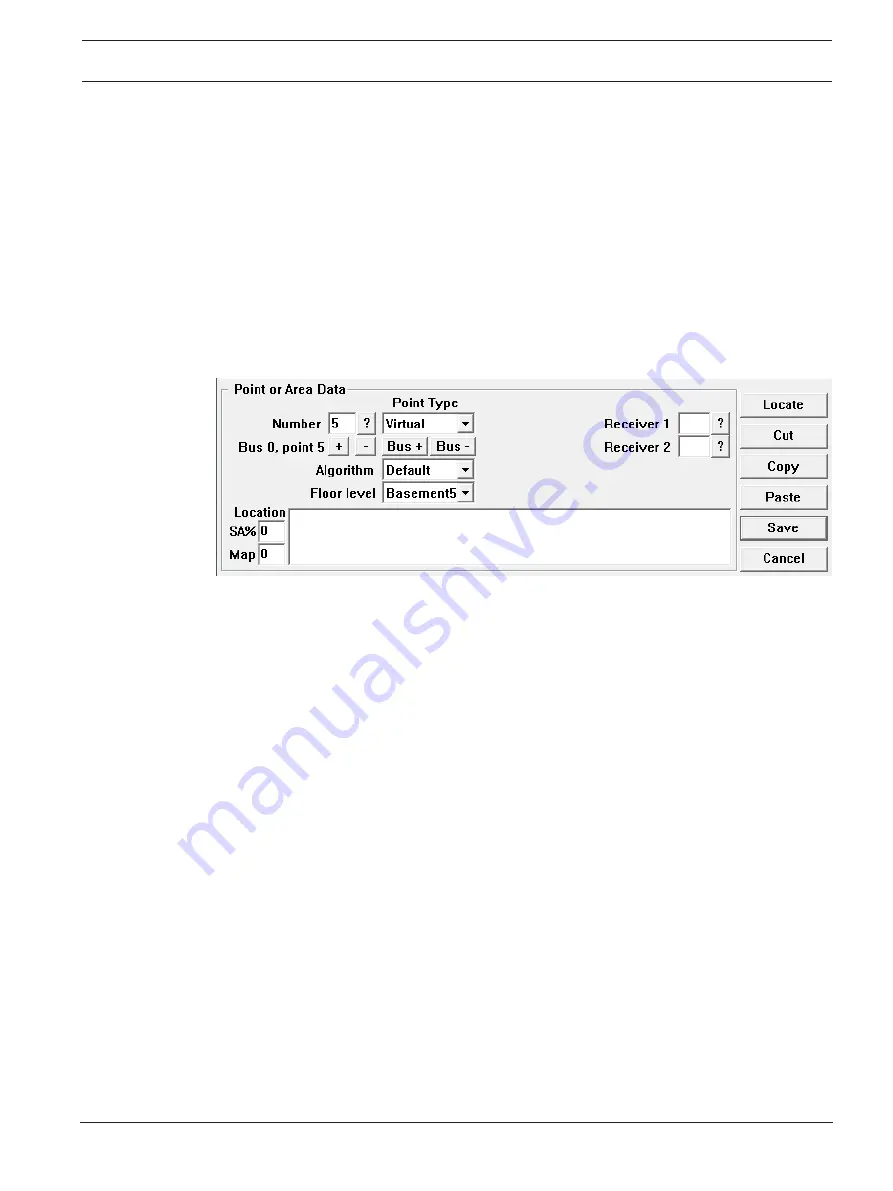
Security Escort
Central Console, computer setup and programming | en
85
Robert Bosch (SEA) Pte Ltd
Training Manual
2017.08 | V2.18.1.0 | DOC
of a problem. The Problem Reports displayed on the central console and printed by the
hardcopy printer contain the device location descriptions that are entered in the
Location
field.
The
Map
field defines which bitmap to display for this receiver or area when an alarm is
closest to it. The default map is 0, which corresponds to bitmap MAP0.EDB stored in the
Security Escort sub-directory. Map 1 is MAP1.EDB. There can be 100 maps per Security Escort
System (0 to 99).
Selecting “Virtual” receiver as the Point Type
Use the “Virtual” selection when there is no physical device connected at this bus location.
Starting with version 2.03 of the Security Escort software, you can add
“Virtual” receivers in the
Transponder Database
. A “Virtual” receiver is added at one of the 64
points allowed per transponder. However, there is no physical hardware used.
Figure 6.11: Data Entry after Selection of Virtual Receiver Point Type
The “Virtual” receiver is intended to compensate in cases where there is a receiver imbalance.
For example, if a building with a dense population of receivers is adjacent to a fence with few
receivers and an alarm occurs between them; the alarm location may pull towards the
building. The “Virtual” receiver references two other physical receivers that must be on the
same transponder. Only if both of the referenced receivers receive an alarm transmission, then
the “Virtual” receiver will be added to the alarm as if was a physical receiver that heard the
alarm at the average receive level of the 2 referenced receivers.
Both the referenced receivers are configured in the
Receiver 1
and
Receiver 2
fields. These
are the two receivers, on the same transponder, that a “Virtual” receiver assumes the average
of. Both receivers must receive a signal before the “Virtual” receiver reports it also received a
signal that is the average of the other two receivers signals. The location algorithm and
sensitivity adjust work the same for a “Virtual” receiver as for a physical receiver. Enter the
receiver’s
Point Number
in the fields, or click the
[?]
button to select the receiver accordingly.
The “Virtual” receiver’s location and sensitivity may be adjusted the same as a physical
receiver. After a “Virtual” receiver is added, verify the surrounding areas to make sure they
have not been adversely affected.
In no event should a “Virtual” receiver be utilized as a cost
savings measure to avoid the installation of an actual receive
r.
For explanations of
Floor level
,
Location
and
Map
fields, please refer to section Selecting
“receiver” as the Point Type
.
Selecting the algorithm
Starting with version 2.03 of the Security Escort software, there are 5 different location
algorithms that can be selected on an individual receiver basis in the
Transponder Database
.
“Classic” (original Security Escort algorithm), “Linear”, “Low” pull, “Medium” pull and
















































